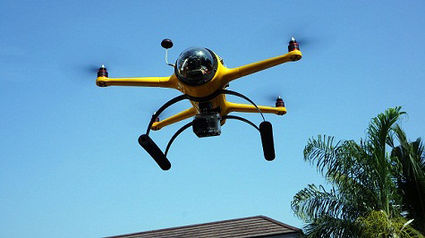Fireworks and Drones prohibited in Big Thicket National Preserve
Last updated 5/27/2016 at Noon
As we approached the Memorial Day weekend, and many visitors are heading outdoors to enjoy a long weekend, the National Park Service would like to remind everyone that the use of fireworks of any kind is prohibited within the preserve boundaries. Also, the use of drones and other remote controlled aircraft is also prohibited in all National Park Units around the country, including Big Thicket National Preserve.
Fireworks including sparklers, fountains, and firecrackers are prohibited. Violators maybe subject to fine or arrest. Superintendent Wayne Prokopetz explained that "Fireworks are prohibited in all national parks and there is no exception for NPS units in states where fireworks are otherwise legal. Fireworks in parks can injure or kill wildlife, interfere with public use, and even cause fires," Prokopetz explained.
Launching, landing or operating unmanned or remote controlled aircraft within Big Thicket National Preserve is prohibited. Drones are prohibited on all NPS grounds and beaches, including sandbars, waterways and open fields.
National Park Service Director Jonathan B. Jarvis signed a policy memorandum in June 2014 that directs superintendents nationwide to prohibit launching, landing, or operating unmanned aircraft on lands and waters administered by the National Park Service.
"We embrace many activities in national parks because they enhance visitor experiences with the iconic natural, historic and cultural landscapes in our care," Jarvis said. "However, we have serious concerns about the negative impact that flying unmanned aircraft is having in parks, so we are prohibiting their use until we can determine the most appropriate policy that will protect park resources and provide all visitors with a rich experience."
Big Thicket National Preserve is located in southeast Texas, near the city Beaumont and 75 miles northeast of Houston. The preserve consists of nine land units and six water corridors encompassing more than 112,000 acres. The Big Thicket, often referred to as a “biological crossroads,” is a transition zone between four distinct vegetation types – the moist eastern hardwood forest, the southwestern desert, the southeastern swamp, and the central prairies. Species from all of these different vegetation types come together in the thicket, exhibiting a variety of vegetation and wildlife that has received national interest.
For general information about Big Thicket National Preserve, visit www.nps.gov/bith or call the preserve visitor center at 409-951-6700. Visit us on Facebook www.facebook.com/BigThicketNPS, Twitter www.twitter.com/BigThicketNPS, and Instagram www.instagram.com/BigThicketNPS.





Reader Comments(0)